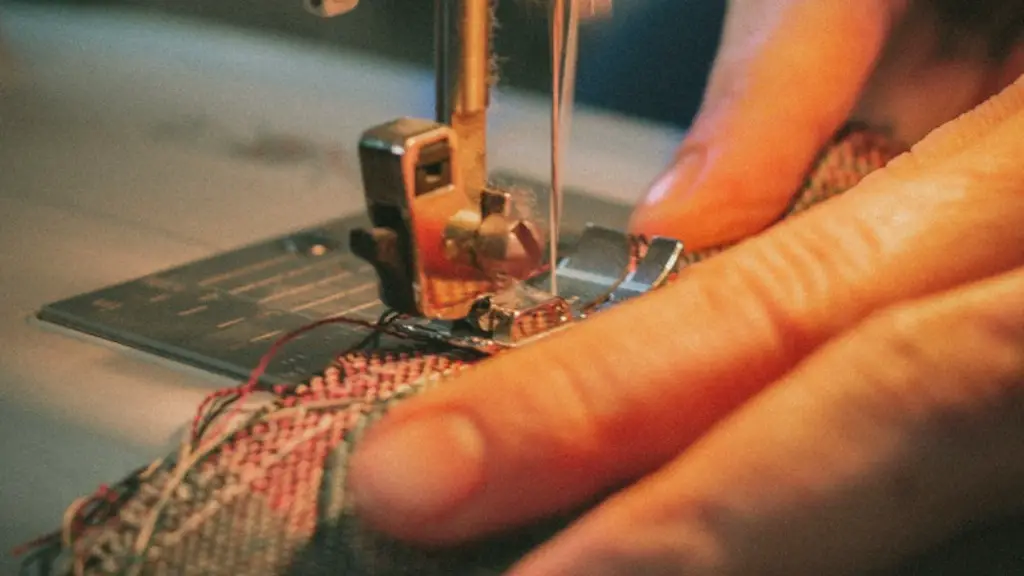Introduction
Sewing machines of today can help you create anything from shirts to tailored dresses, quilts, and curtains with ease. However, one of the best things to do when it comes to sewing machines is to include a walking foot. This is a particularly useful foot that makes up part of the larger sewing machine kit. Without a walking foot, you are limited in the types of stitches that you can do on the machine. In this article, we’ll explore what a walking foot is and how to properly install it on your sewing machine.
What Is a Walking Foot?
A walking foot is a type of presser foot that attaches to a sewing machine. The presser foot is what applies pressure to fabric when a machine is stitching. The walking foot is unique because it comes with an extra set of feed dogs that continuously move the fabric along, allowing for smoother results when it comes to stitching items that a static foot couldn’t handle easily. It ensures that your fabric stays taut and does not pull or bunch up. Because of this, it’s a great addition to any sewing machine kit.
What Does a Walking Foot Do?
A walking foot helps to move fabric along, so it is not as likely to bunch up as you stitch. This helps with more intricate and larger projects, like curtains, quilts, and tablecloths, as the walking foot prevents skipping stitching across the fabric. It also comes in handy when you’re working with heavy fabrics, like leather or upholstery, that need a little extra help when being fed through the machine.
Motives To Use A Walking Foot
Adding a walking foot to your sewing machine removes some of the work that would normally be needed to stitch projects together. This is great for those who find it difficult to properly manipulate large projects with a static presser foot or those who are working on heavier fabrics that need greater control and pressure. They are also a great way to achieve a professional finish to any project, as the walking foot helps to ensure that all stitching is done evenly across the piece.
Importance Of A Walking Foot
A walking foot is an essential piece of equipment for those who do a lot of sewing and quilting, as it helps to keep fabric from bunching up and provides a superior end-result to a variety of projects. It also benefits those who are new to the world of sewing, as it takes a large amount of the work out of manipulating fabric. The walking foot is also fairly affordable and easy to install, making it a great addition to any sewing machine kit.
What To Consider When Installing A Walking Foot
When installing a walking foot, it is important to be sure that the fit is correct. To ensure that this is the case, it is recommended to purchase a walking foot that is specifically designed for the sewing machine model that you own. Additionally, it is important to refer to the machine’s manual and/or a visual guide when installing the foot.
How To Put A Walking Foot On A Sewing Machine
The steps for installing a walking foot on a sewing machine vary depending on the model, but the basics are the same.
Step 1
Unplug the machine before beginning any installation process.
Step 2
Remove the current presser foot and the accompanying plate.
Step 3
Identify the screw that holds the presser foot in place. This is usually located near the back of the machine.
Step 4
Carefully unscrew the existing presser foot and remove it from the machine.
Step 5
Align the walking foot onto the blade of the machine and attach the screw to stay in place.
Step 6
Ensure that the foot is securely fastened and properly aligned with the blade.
Step 7
Test to be sure that the foot can move easily across the fabric and that the needle is properly aligned with the feed dogs.
End Result
Adding a walking foot to a sewing machine is a simple process that can yield great results. A walking foot is an ideal addition to any sewing kit, as it helps to ensure a professional finish to any project. With its added pressure and continuous fabric movements, it ensures that more intricate projects can be tackled.
Types Of Walking Foots Available
There is a variety of walking foots available on the market today. The type that one needs is often dependent on the project that needs to be completed. The most common types are:
Even Feed Foot
The even feed foot is a double-feed foot that is great for sewing multiple layers of fabric simultaneously. It is often used for quilting due to its even handling of multiple layers.
Edge Joining Foot
This type of walking foot is great for joining fabrics without the bulk that comes with seams. It is also great for parallel stitch lines, as it lines the two pieces of fabric up before feeding them through the machine.
Cloth Guide Foot
The cloth guide foot is perfect for topstitching and can also be used with the edge joining foot. It helps the fabric stay in line and ensure that the stitched lines are uniform and aligned properly.
Open Toe Walking Foot
The open toe walking foot allows for greater visibility when it comes to stitching, as it leaves the area around the toe open. This is great for those who need more precision when piecing together projects.
Conclusion
A walking foot is an invaluable addition to any sewing machine kit. It can help to make larger projects easier to complete and provide extra pressure for heavier fabrics. With the variety of walking foots available, it is easy to find the one that fits the project needs. With a few simple steps, a walking foot can be installed properly on a sewing machine.





